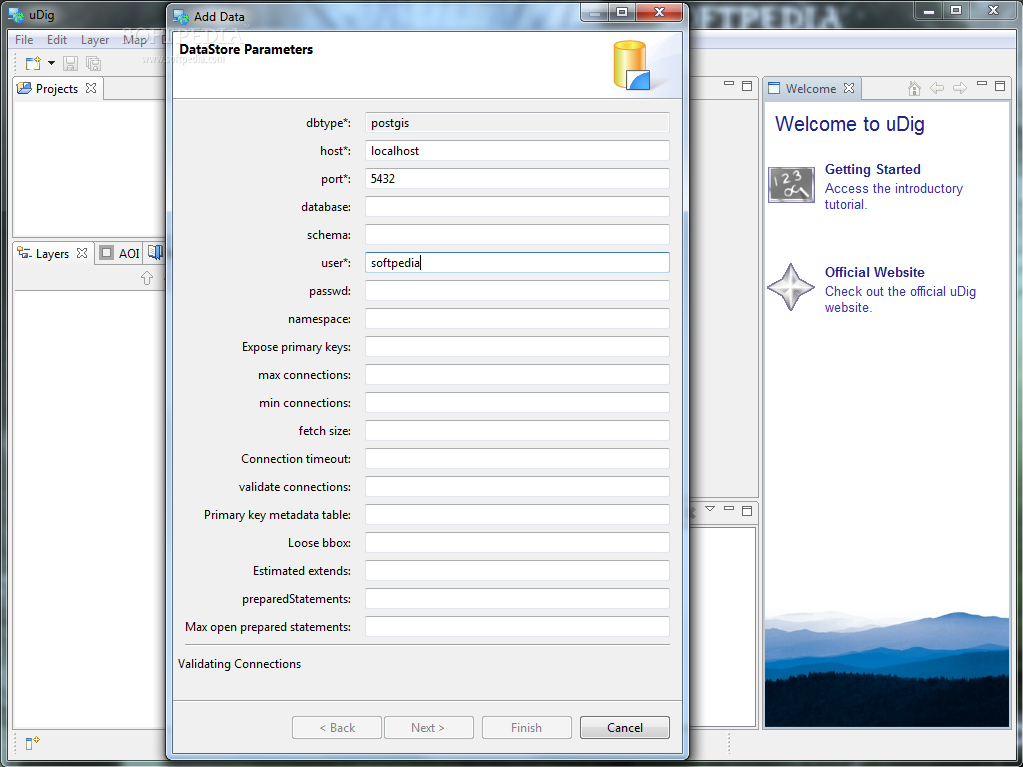

- #Udig add basemaps how to#
- #Udig add basemaps full#
- #Udig add basemaps software#
- #Udig add basemaps download#
- #Udig add basemaps free#
The rapid growth in popularity of the internet, emerging opportunities to publish georeferenced data and the growing public interest in accessing spatial information, combined to spawn a large number of web mapping applications such as MapGuide, Mapquest, MultiMap, and ArcIMS some commercial, and others, free and open to the general public. The first internet mapping solutions were simple, only able to produce maps as static image files for example a Graphics Interchange Format (GIF), then shortly after, in the mid 1990s with the appearance of JavaScript (which allowed users to execute client side requests), interactive services became available such as pan, zoom, and query.

Online publishing of georeferenced data is not new spatial data has been published online since the early 1990s, shortly after the web became publicly available. For this an open source web GIS platform was chosen that would enable users to access, visualise and interact with their data online within a web browser. If HEIMTSA was to overcome these problems it needed to provide a way to allow users to visualise their data freely online and be simple to use.
#Udig add basemaps software#
Commercial software which is designed to use this type of data online already exists but it can often come with a high initial set up cost, ongoing licensing fees and require some degree of technical knowledge to operate. The goal of this part of the project was to allow users anywhere in the world the ability to look at and interact with their model results in an online environment and share their findings with others. With communication and data sharing defined as underpinning elements that aid in dealing with cross border health and environmental issues, HEIMTSA set out to improve communication by enabling the access and viewing of (spatial) data and information easily online to expert and non expert users alike.
#Udig add basemaps how to#
A drawback of this approach was that it required the user to know how to interpret the results and also have appropriate software to visualise their data.
#Udig add basemaps download#
These methodological topics were integrated within an online modelling toolbox where users could request models to be implemented based on specific inputs and later download the results.
#Udig add basemaps full#
HEIMTSA was structured around loosely coupled modules that deal with pollutants and their media using the full chain (impact pathway) approach.

The project's overall goal was to support the European Union's (EU's) Environment and Health Action Plan (EHAP) by extending health impact assessment (HIA) coupled with cost benefit analysis (CBA) methods and tools to evaluate the impacts policy scenarios have (at a European level) on the environment and human health.

The research presented here, reports on results from the European Union (EU) FP6 funded Health and Environment Integrated Methodology and Toolbox for Scenario Assessment (HEIMTSA) project. Within the environment and health fields, recent applications using GIS have been used in projects such as identifying regions at risk to malaria, monitoring effects of air pollution on asthmatics and defining an " Index of Relative Wellbeing" for an area from census data. Developments in Geographical Information Systems (GIS) have now made the mapping of this information commonplace and are used in a large range of applications. Mapping, in the context of the Environment and Health sub-discipline, provides a visual assessment for investigating the spatial distribution of a disease and potential associations and underlying causes. Using maps to visualise data can enable quicker interpretation of complex geographical phenomena, identify patterns, and aid in planning, resource allocations for policy and decision making.


 0 kommentar(er)
0 kommentar(er)
